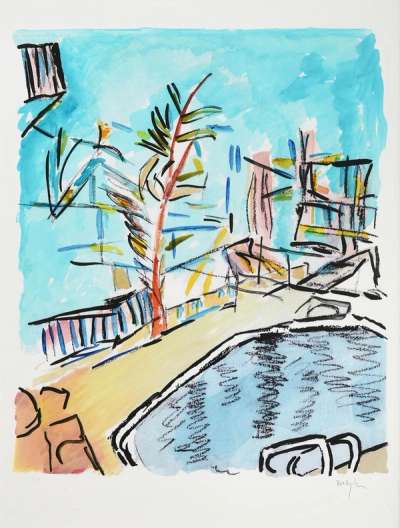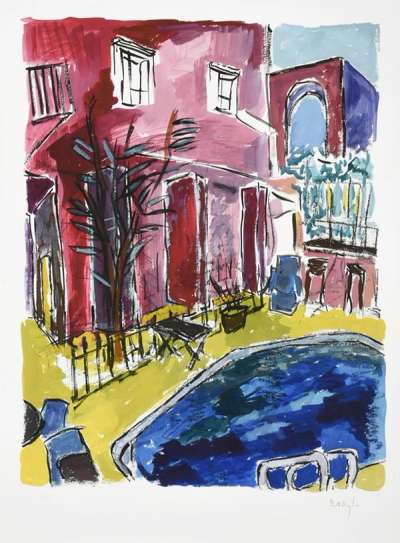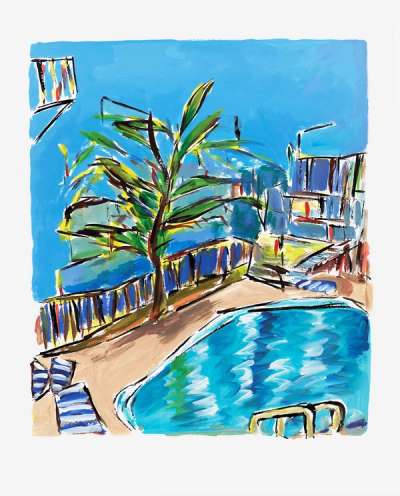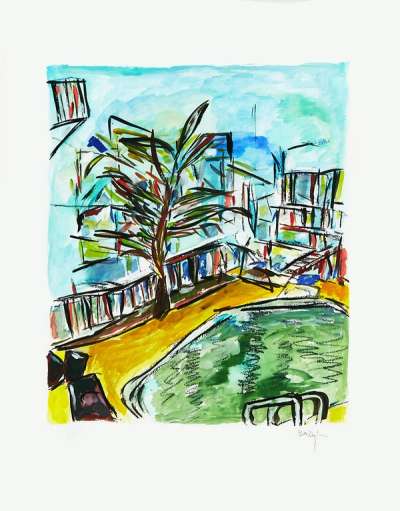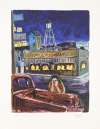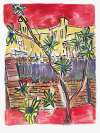Motel
Pool
Bob Dylan is believed to have written some of his most famous songs whilst staying at motels, including his 15th studio album, Blood On The Tracks. Featured in The Drawn Blank Series, Motel Pool has a nostalgic, autobiographical feel.
Bob Dylan Motel Pool For sale
Motel Pool Value (5 Years)
Bob Dylan's Motel Pool series has historically shown more modest results compared with the artist’s wider oeuvre, with auction prices ranging from £560 to £2000. Average annual growth has remained modest at -16.37%, with certain works seeing declines in value. Over 8 total auction appearances, average selling prices have held steady around £1145. This series appeals to collectors seeking accessible entry points into Bob Dylan’s print market.
Motel Pool Market value
Auction Results
| Artwork | Auction Date | Auction House | Return to Seller | Hammer Price | Buyer Paid |
|---|---|---|---|---|---|
 Motel Pool (2011) Bob Dylan Signed Print | 10 Sept 2025 | Forum Auctions London | £553 | £650 | £800 |
 Motel Pool (2018) Bob Dylan Signed Print | 10 Sept 2025 | Forum Auctions London | £510 | £600 | £750 |
 Motel Pool (2009) Bob Dylan Signed Print | 24 Jan 2024 | Uppsala Auktionskammare | £850 | £1,000 | £1,200 |
 Motel Pool (2013) Bob Dylan Signed Print | 4 Mar 2023 | Tennants Auctioneers | £1,105 | £1,300 | £1,550 |
Sell Your Art
with Us
with Us
Join Our Network of Collectors. Buy, Sell and Track Demand
Meaning & Analysis
Motels are a recurring motif throughout Bob Dylan's artworks, from the neon lights and palm trees of Pink Motel to the bold signage of Abandoned Motel, Eureka. Found along every American highway, they offer not only a resting place for musicians, but somewhere to discover new inspirations.
It is reported that Dylan wrote some of his most seminal lyrics whilst staying at motels. This includes the Hotel June Malibu along the Pacific Coast Highway in Point Dume, California, where he is said to have written his 15th studio album, Blood On The Tracks, in the 1970s.
Taken from The Drawn Blank Series, Motel Pool leads viewers behind the motel façade and straight to the pool. This summery scene features loose lines, a warped perspective, and confident streaks and waves of colour. Between the variations, the nondescript poolside is transformed into something slightly psychedelic; the water shifts from blue to green, whilst the leaves of the trees shrink and grow. The background, just lines in some artworks, morphs into blocks of colour or even detailed buildings in others.
Water appears in much of Dylan’s work, including the rivers and beaches of The Brazil Series and the calming waters of The Asia Series. In Motel Pool, Dylan opts for the impression of water rather than a realistic depiction. Using watercolours and gouache, or pencil and charcoal, he has captured its transformative nature through expressive squiggles and reflections of light and colour.
Like Edward Hopper, who also captured the realism of everyday American life, Dylan has chosen an unremarkable scene. He illustrates that you can make something ordinary beautiful by adding colour.
